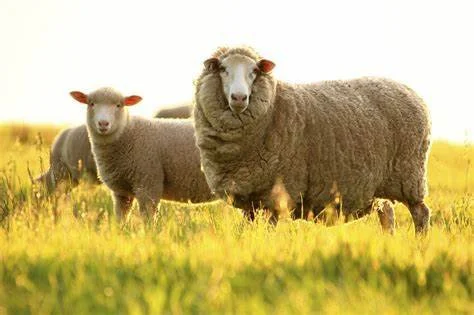Merino wool is regarded as one of the best natural fabrics for base layers. As the first layer of clothing against your skin, your base layer must be breathable, moisture-wicking, and temperature regulating. Merino wool excels in all these areas, which is why it has become a popular choice for athletic base layers and casual wear.
This article will examine why merino wool makes for such an effective base layer material.
1. Moisture Management and Temperature Regulation
Another key attribute that makes merino wool an excellent insulation fabric is its unrivaled moisture management ability. Unlike cotton and synthetics that tend to absorb sweat and hold it close to the body resulting in dampness, merino wool wool’s microscale structure allows it to evaporate moisture from the skin into the fabric and out again into the surrounding air.
This constant moisture transport process helps keep the skin dry even during strenuous activities or humid conditions. The fabric does not lose its insulative warmth-retaining properties even after getting wet through sweat or rain.
Moreover, merino wool has remarkable temperature-regulating qualities. It can absorb moisture as well as release heat from the body through convection. On hot days, the moisture vapor from sweat is carried away from the skin surface into the wool fabric.
Simultaneously, air can freely circulate due to the spacious structure of wool fibers, dissipating body heat.
Are you searching for the ideal merino wool base layer to keep you comfortable during any activity? While many retailers sell merino wool products, Skre offers the top-performing merino wool base layers to suit all your needs.
In colder conditions, the tiny pockets of air trapped in the wool are an insulation layer retaining body heat. This enables consistent thermoregulation whether it’s hot or cold outdoors. Despite changing temperatures, merino wool maintains a thermally balanced microclimate against the skin.
2. Sustainability
Merino wool is not only an excellent natural performance fabric but also one of the most eco-friendly and sustainable textiles available. Merino sheep are raised primarily on grasslands and do not require supplemental feeding that contributes to increased carbon emissions as opposed to cattle farming.
Sheep fiber is also harvested annually through shearing without harming the animal, unlike silk production, which involves killing the silkworm.
Merino farms are predominantly located in Australia and New Zealand where strong animal welfare laws protect the sheep.
Also, wool production leaves a much smaller carbon footprint than synthetic fiber manufacturing, which uses large amounts of non-renewable crude oil as a raw material and emits toxic pollutants during fabrication.
Additionally, wool is completely biodegradable and can be composted to regenerate nutrients in the soil at the end of the product lifecycle, in contrast to oil-based synthetics that pollute landfills for centuries.
When cared for properly, wool products can be worn extensively and last many years before needing replacement. Synthetics have a much shorter useful lifespan and turn into microplastics polluting oceans eventually.
3. Durability and Odor Resistance
A common misconception about wool is that it is delicate and prone to shrinkage or loss of shape after repeated washing.
However, merino wool is highly durable and has superior dimensional and abrasion stability compared to other fabrics. Merino woolen fibers are lovely, allowing them to interlock tightly during production for a resilient structure.
Additionally, merino wool contains lanolin, a natural oil secreted by sheep glands, which waterproofs the fibers and makes them crease and shrink-resistant.
This toughness allows merino wool base layers to withstand repeated wear and tear under strenuous activity or harsh conditions without pilling, tearing or losing their shape over time. The fibers are also resilient against damage or weakening from exposure to UV light.
As a result, high-quality merino wool pieces can easily last several years or more with proper care.
Furthermore, thanks to merino wool’s natural lanolin properties, base layers made from the fabric resist the buildup and growth of odor-causing bacteria. Lanolin has antimicrobial qualities preventing microbial proliferation even after multiple uses without washing.
4. Care and Wash Instructions
While merino wool is hardy and long-lasting, it still requires some primary care to retain its shape, functionality and freshness over time. A fundamental rule is to always follow garment tags for specific instructions, as washes may vary based on the weight and processing of the wool.
Hand-washing or gentle machine washing in cold water with a mild, pH-neutral wool wash is recommended to prevent shrinkage when cleaning merino wool pieces. Agitation should be gentle to avoid felting of fibers.
It’s best to air dry wool garments rather than employ hot heat from a dryer, which could cause unwanted shrinking or stretching. Lay flat to dry for best shape retention. Brushing wool occasionally prevents pilling and restores the loft to worn areas.
Mild wool fibers like Merino may only need an occasional wash compared to heavier wools, depending on use. Proper storage folded or on hangers in an insect-free area preserves clothing between wears. With simple, low-impact care like this, merino wool base layers maintain excellent performance season after season.
Final Thoughts
Whether looking for a comfortable, odor-resistant, temperature or eco-friendly base layer fabric, it’s hard to find a material more suitable than merino wool. Its unique combination of performance attributes, durability, and care requirements make it the superior natural fiber choice for next-to-skin wear.
Although merino wool pieces may carry a higher initial price tag than synthetics, their longevity, breathability, and sustainability produce more excellent value in the long run.
For serious outdoor athletes as well as casual wearers, a Merino wool base layer is an investment worth making for reliable insulation, moisture management, and skin-friendly softness through multiple seasons of activity.
Also Read: Gear Up For Adventure: Unleashing The Best Tactical Backpacks









